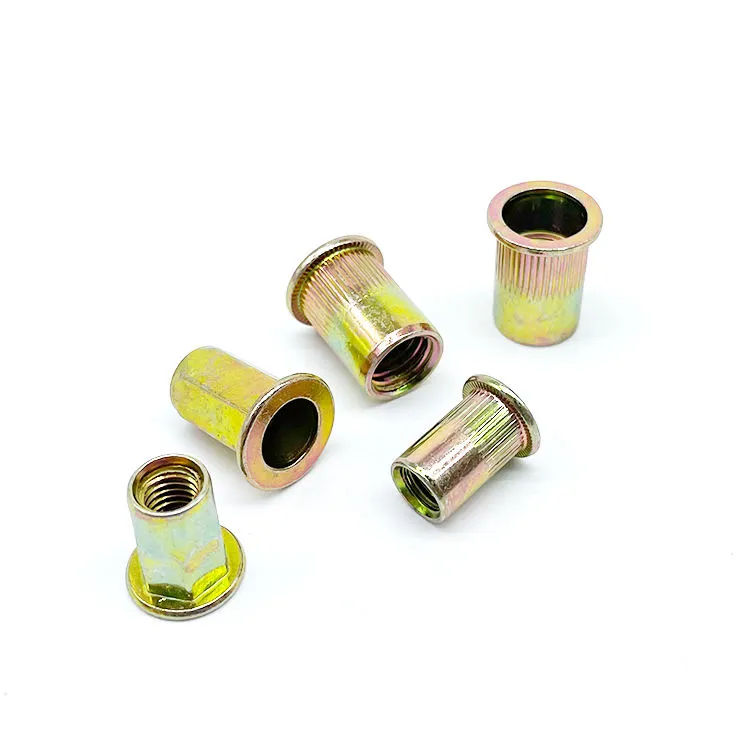

Comparing Flat Washers and Lock Washers for Optimal Fastening Solutions
Oct . 16, 2024 15:48 Back to list
Comparing Flat Washers and Lock Washers for Optimal Fastening Solutions
Understanding Flat Washers and Lock Washers Their Importance in Fastening Systems
In the world of mechanical engineering and construction, the importance of hardware components cannot be overstated. Among these components, washers play a significant role in ensuring the effectiveness and safety of assemblies. Two of the most common types of washers are flat washers and lock washers. While they may seem similar at first glance, each type serves a distinct purpose in fastening systems.
What is a Flat Washer?
A flat washer is a thin, disc-shaped piece of metal or other materials with a hole in the center. Its primary purpose is to distribute the load of a threaded fastener, such as a bolt or screw. By spreading this load, flat washers help to prevent damage to the surface being fastened and avoid shearing off the fastener itself. They also serve to reduce friction when tightening or loosening a bolt.
Flat washers come in various diameters and thicknesses to accommodate different fastener sizes and load requirements. They may also be made from different materials, including steel, stainless steel, brass, and plastic, to suit specific environments, such as those exposed to moisture, chemicals, or high temperatures. The choice of material is critical, as it can influence the washer's performance, durability, and resistance to corrosion.
The Role of Lock Washers
Lock washers, on the other hand, play a different but equally imperative role in fastening systems. These washers are designed to prevent bolts and screws from loosening due to vibrations or applied torque. Unlike flat washers, which primarily distribute load, lock washers use various designs to create resistance against turning. There are several types of lock washers, including split lock washers, toothed lock washers, and wave washers.
flat washer and lock washer

- Split Lock Washers These are helical in shape and have a split that provides spring-like action. When a fastener is tightened, the split lock washer compresses, creating a tension that helps to maintain the position of the fastener. - Toothed Lock Washers These washers feature teeth or serrations that dig into the surface of both the fastener and the material being fastened. This biting action helps to prevent loosening, especially in applications subject to significant vibration.
- Wave Washers These are cupped in shape and can compress to fit snugly against the surfaces they are between. This design allows for a flexible connection that compensates for surface irregularities.
Selecting the Right Washer for Your Application
Choosing between flat washers and lock washers depends on the specific requirements of your application. If the objective is merely to distribute load and protect the surface, then flat washers are typically sufficient. However, if the assembly is exposed to vibration or dynamic loads, employing lock washers is advisable to ensure the fasteners remain securely tightened.
It is also essential to consider the materials and environmental conditions when selecting washers. For example, in a marine application, stainless steel washers would be preferable due to their corrosion resistance, while in a high-temperature setting, specific high-heat-resistant materials might be necessary.
Conclusion
In summary, flat washers and lock washers are crucial components in the field of mechanical fastening. While flat washers excel in load distribution, lock washers shine in preventing loosening under dynamic conditions. Understanding the differences between these washers is vital for engineers, designers, and construction professionals, as choosing the appropriate washer can significantly impact the reliability and longevity of an assembly. By carefully selecting the right washer for the task at hand, one can ensure the integrity and safety of bolts and screws, contributing to the overall success of any engineering project.
Latest news
-
High-Strength Hot Dip Galvanized Bolts - Hebei Longze | Corrosion Resistance, Customization
NewsJul.30,2025
-
Hot Dip Galvanized Bolts-Hebei Longze|Corrosion Resistance&High Strength
NewsJul.30,2025
-
High-Strength Hot-Dip Galvanized Bolts-Hebei Longze|Corrosion Resistance&High Strength
NewsJul.30,2025
-
Hot Dip Galvanized Bolts-Hebei Longze|Corrosion Resistance&High Strength
NewsJul.30,2025
-
Hot Dip Galvanized Bolts - Hebei Longze | Corrosion Resistance, High Strength
NewsJul.30,2025
-
High-Strength Hot Dip Galvanized Bolts-Hebei Longze|Corrosion Resistance, Grade 8.8
NewsJul.30,2025

